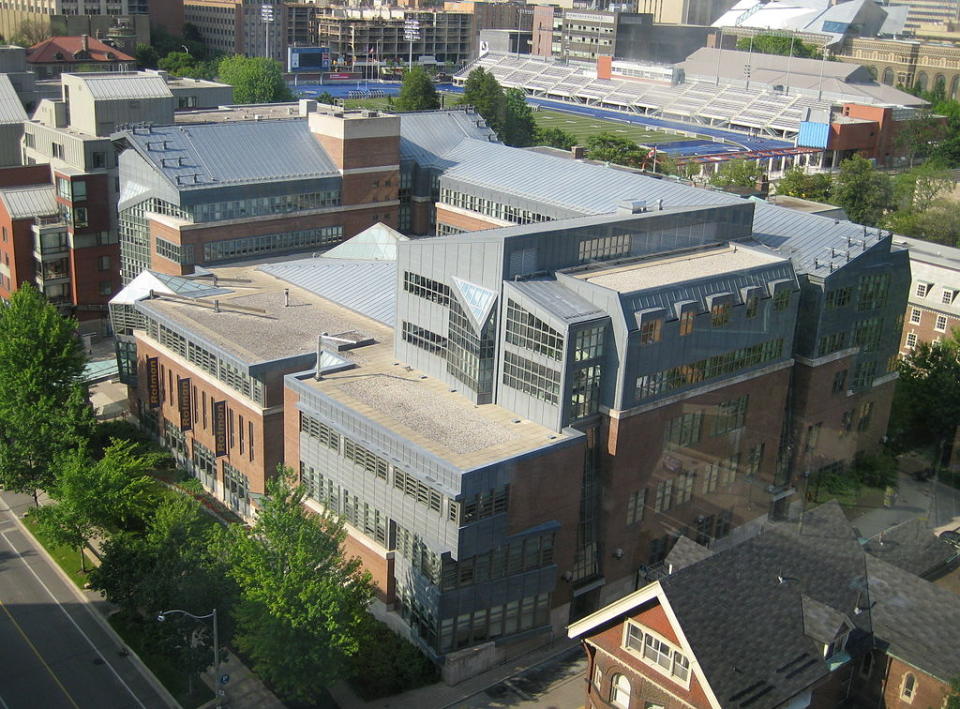Canadian business schools see poor showing in Financial Times MBA ranking

The Financial Times annual rankings of top master of business administration (MBA) programs around the world are in, and Canada isn’t looking so hot.
Our first placement on the 100-strong list of MBA programs was University of Toronto’s Rotman School of Management in 65th place (down five places from 60th last year), followed by Western University’s Ivey Business School in 94th (down from 88th) and the Smith School of Business at Queen’s University which placed 100th (versus last year’s 93rd).
That’s only three schools out of Canada’s 22 Association to Advance Collegiate Schools of Business (AACSB) accredited schools (accreditation is a stipulation for entering the race). The rest haven’t even made the cut. So what’s going on?
Well, before Canada’s business schools fall into some existential crisis, it’s important to recognize that while placing highly is great publicity, the rankings are just one part of the story, says Michael Wiemer, AACSB’s senior vice president and chief officer of the Americas.
“Looking at the rankings is like looking at the market with one eye closed, it doesn’t give you a full dimensional picture of what business schools are doing,” says Wiemer. “You think about all the things a school does – from its mission to its vision, to the quality of its faculty, the caliber of its research, the industries it interfaces, the communities it touches, et cetera… all of those elements of quality end up getting simmered down to a single digit that really doesn’t give the full perspective.”
Average income three years after graduation and salary increase compared to their pre-MBA salary make up a bulk of the ranking, each weighted at 20 per cent for a total of 40 per cent while 10 per cent of that ranking is based on the number of research articles published by full-time staff at the MBA program. Other factors like value for money (which is calculated by dividing their average alumni salary three years after graduation by their MBA’s total cost, including tuition and other expenses); the diversity of staff, board members, students by gender (i.e. schools closer to a 50:50 ratio rank higher), nationality; and the international reach of the MBA program are taken into consideration.
“FT rankings tend to put a very high value on things Canadian schools are not very good at,” admits Robert Kennedy, dean of Ivey Business School. “Almost all of the schools at the top are schools in major urban areas that put a lot of people into investment banking and finance.”
According to the FT, the average weighted salary at Rotman is US$101,270, Ivey is US$99,142 and Smith is US$93,102, which pales in comparison to frontrunners like second place Stanford Graduate School of Business at US$195,322 and third place, University of Pennsylvania’s Wharton, at US$181,634. First place INSEAD, with campuses in Fontainebleau, France, Abu Dhabi, UAE and Singapore, sits at US$167,657 but scores big in international diversity.
“In Canada there’s a paradox – we have a lot of international students but many are now classified as Canadians,” says Kennedy pointing out that many were born elsewhere but are Canadian citizens or permanent residents.
That’s not to say Canadian business schools are off the hook for the poor showing in the FT rankings. Kennedy, an American who did his masters at MIT’s Sloan School of management and clinched his PHD from Harvard, says Canadian business schools do have a tendency to compete amongst themselves.
“We need to measure ourselves against the global best, we need to market our programs globally, we need to bring in students from all over the world,” he says. “It’s not enough to find an Indian kid who went to high school in Toronto, that’s not (international) diversity.”
Wiemer agrees, especially with respect to marketing, saying that business schools in general could get better at marketing their unique attributes.
“A school in Halifax is going to have a very different mission than a school in Toronto and it should – that stems from the type of faculty, from budget, from the type of students they attract and place,” he says. “But it’s taking a moment to really highlight the successes – it might be through press releases it might be through engagement community and sharing the insights from the faculty (and) the success of students.”
Especially given that these environments are built to train leaders, to find future c-suite execs, to train entrepreneurs how to become business builders, says Wiemer, they need to do a better job at championing the success of themselves as a business.
“There are a number of schools that just don’t actively participate in the social media domain,” he says. “When you think about millennials for example that’s a medium that resonates well.”
But the rankings aren’t the be-all, end-all for finding the right fit, adds Kennedy.
“While an MBA looks like one product, the experience you have is really different,” he says. “Going to Ivey versus going to UBC versus going to Rotman… you end up with the same degree at the end of the program but those are completely different experiences, different learning styles, [a] different balance between technical skills and learning to apply those skills.”
Which is why Kennedy tells any potential applicant looking for the right fit to visit the school and try to decide what kind of learning experience they’re after. He speaks from experience, pointing out that where he studied, Harvard and MIT, are about “two miles away.”
“It’s hard to imagine two more different masters experiences… they both offer an MBA and depending on the ranking you look at, one type will advantage MIT and the other will advantage Harvard,” he says. “Neither is right, it’s much more a matter of fit.”

 Yahoo Finance
Yahoo Finance 